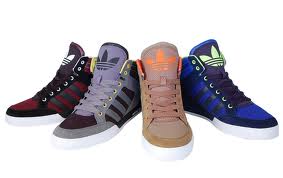The off line population
Chinese middle class love too much shopping. If a consequent number of them found their satisfaction buying on line there still have around 68% of them which prefer go to stores for buying. 
They will easily buy things after try products or touch them. The report said that 43% shopped weekly and 35% monthly in stores, with two thirds (68%) wanting to see, touch or try the merchandise. In fact the only reason why most of Chinese buy online it is because of the price of articles. On holidays large tourists are interested by country with good stores as destinations.
Foreign fashion brands establish stores in China
The chinese fashion boom 
China is expected to become the largest fashion market within the next five years. In 2015 the China’s luxury market is forecast to soar to US$27 billion one fifth of the world’s total up from US$10 billion in 2009. Like all emerging nations, China is a country that is passionate about fashion. The country is known as a place where appearance is of the utmost importance.
Today China fashion week has become world-renowned .More than a simply a “top-rated platform for fashion design, ready-to-wear- accessories, styling and other designs and new technologies,” it is today a “platform for promoting brands, displaying originality, and broadcasting fashion trends” to the world.
Coming around the world in October 2013 there were about 320 designers, more than 350 fashion brands, and holds over 768 fashion shows.
The event was covered by hundred world media
The difficulties of online stores
Establish an online store for Chinese people is a little difficult for many reasons. First of all most of Chinese are not good in English and will prefer websites in Chinese than in English. Secondly it is better for your website to be located in China to reduce uploading time because if your pages take too much time to be open they will not have the patience to wait.
 Also by experience many western stores as Topshop and Miss Selfridge it is easier to have stores in the country because just dealing on websites be like to have just one small shop in a large in the world largest shopping mall.
Also by experience many western stores as Topshop and Miss Selfridge it is easier to have stores in the country because just dealing on websites be like to have just one small shop in a large in the world largest shopping mall.
A good look for competitiveness
In China fashion industry is one of the most famous so as for many brands to be attracted and local brands to be developed. There is a real fight for a brand or a product to impose its image or its name. Only be online will not give you the opportunity to be competitive on china fashion market because you will be confront to a lot of offers from others competitors. Have big store well build and well-designed will attract a lot of curious who will be satisfy and will talk about your store to their groups and your image will be boost easily
Some fashion brands established in China
ADIDAS
GILETTE
PANTENNE
L OREAL
ARMANI
NIKE
BURBERRY
MANGO
ZARA
SEPHORA
read also:


1 comment
PedroDiMeiguo
The Chinese market should be one of the top priorities for foreign brands, considering a lot of factors. China is too profitable to be avoided, the list of established brands should be wider, would be interesting to have a complete list of these brands also!